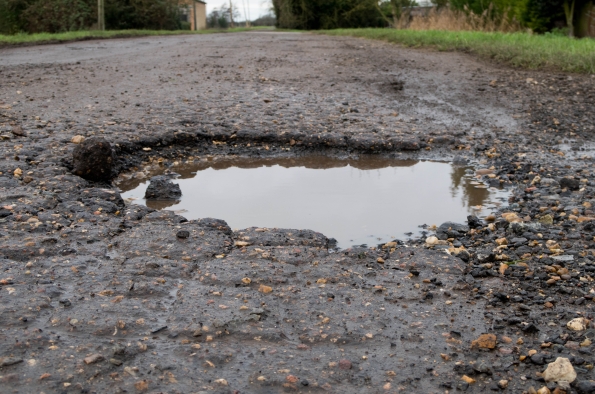ROAD SAFETY and breakdown organisation GEM Motoring Assist is encouraging motorcyclists to be alert to potholes and poorly-maintained road surfaces. As the riding season gets under way, GEM says more roads than ever are in poor condition, posing a serious risk to riders.
GEM is also warning of other safety hazards for riders on rural roads, where two thirds of motorcycle fatalities occur1. An exceptionally wet winter has left large amounts of mud and debris on road surfaces, compromising a rider’s ability to stop or change direction promptly.
Recent data from the Asphalt Industry Alliance (AIA) shows that less than half of roads in England and Wales maintained by local councils are in a good condition, with 36 per cent deemed adequate and 17 per cent poor2. As the weather improves and the riding season gets into full swing, GEM is urging riders to protect themselves from the danger created by potholes, ruts and poor surfaces.
GEM road safety adviser James Luckhurst said: “Potholes present risks for riders and their bikes. If you’re not paying attention and you hit a deep enough pothole, you run the real risk of losing control and falling off. Even in a less serious impact, you may pick up damage to your suspension and tyres.
“Treat any rural road with respect, choose your speeds wisely, never exceed speed limits and don’t be tempted to keep up with faster riders if you feel unsafe or uncomfortable.”
Tips for riders
Follow GEM’s five simple ‘lifesaver’ safety tips and reduce the risk of being involved in a collision:
- Take pothole risks seriously. Adjust your speed and stay 100 per cent focused on your journey. Make a continuously evolving risk assessment of road surface and condition, as well as anticipating other hazards.
- Commit to some additional training which can help you pick up advanced rider tips on planning manoeuvres, cornering and braking. Take a first aid course as well, so that you feel confident in assisting a fellow road user who may need your help.
- Wear high visibility clothing on all journeys, and ride in a way that gives other road users a better chance of seeing you.
- Don’t ride beyond your comfort zone, especially if you’re riding in a group. If your friends are cornering too quickly for you, let them go and join them at the next junction.
- Try not to dwell on your errors as you go along. Plan 10 to 15 seconds ahead, anticipate the next hazards. When you stop for a break, reflect on anything that didn’t go to plan, ask what you have learnt and how you can reduce the chance of the same thing happening again.

















